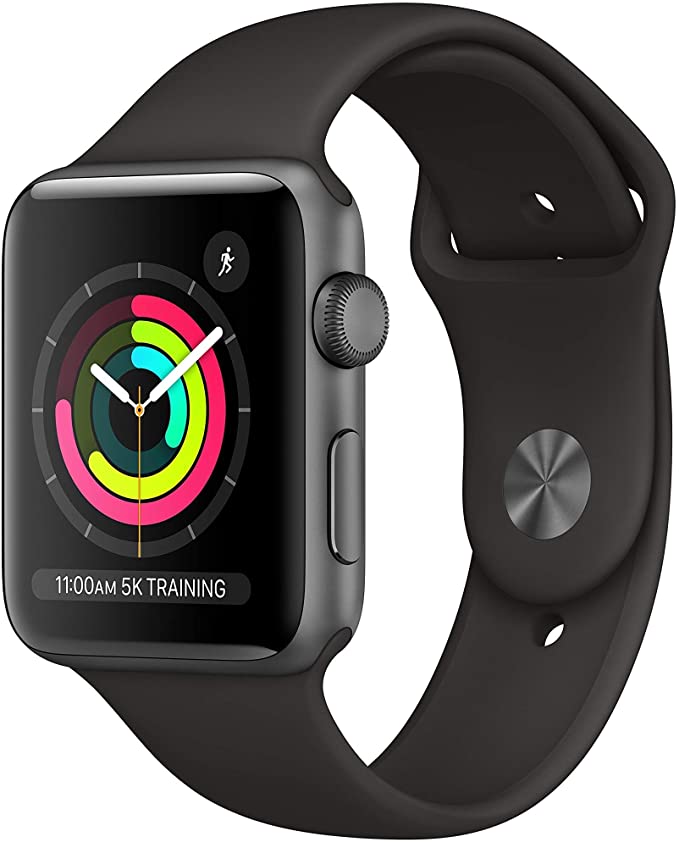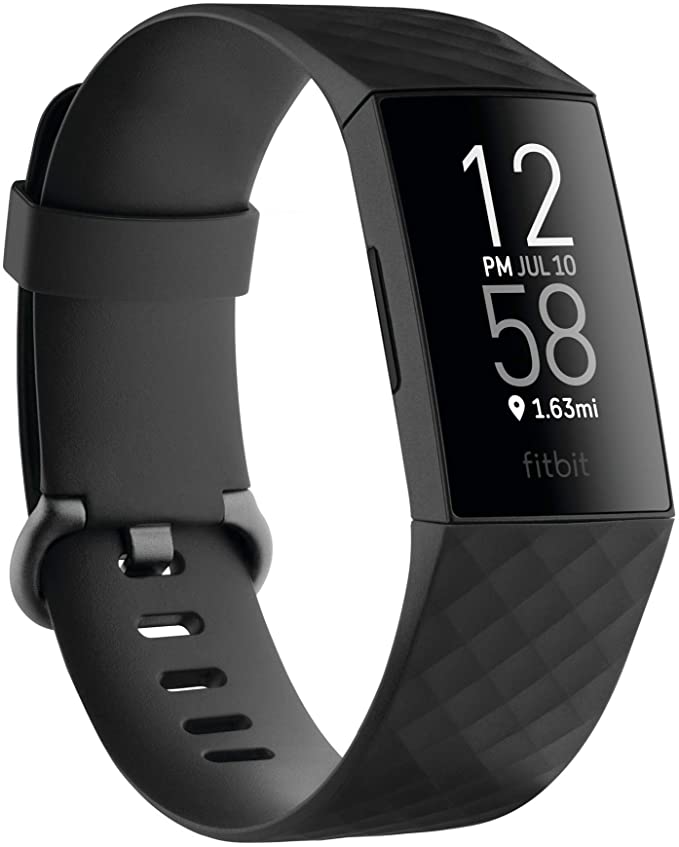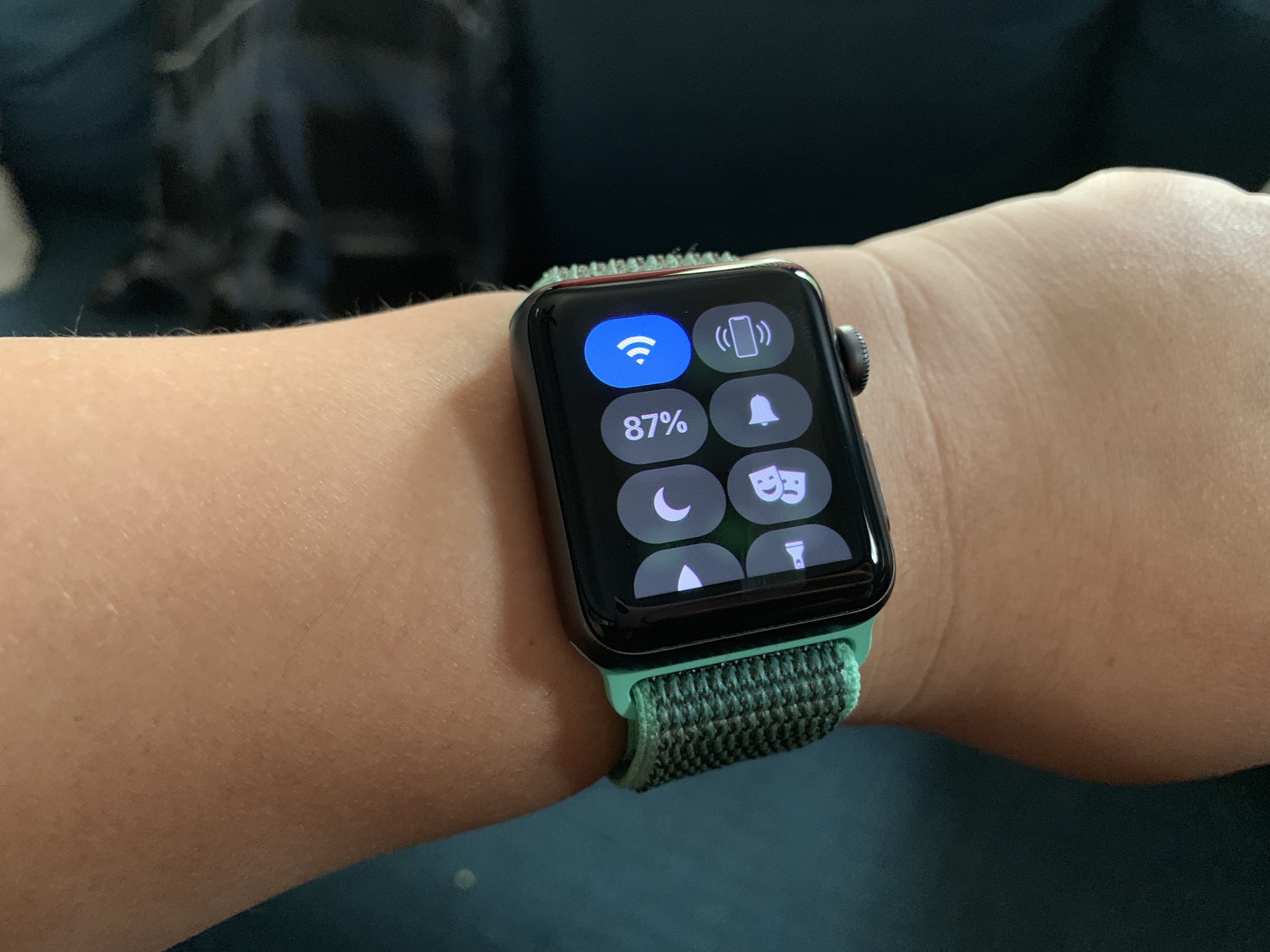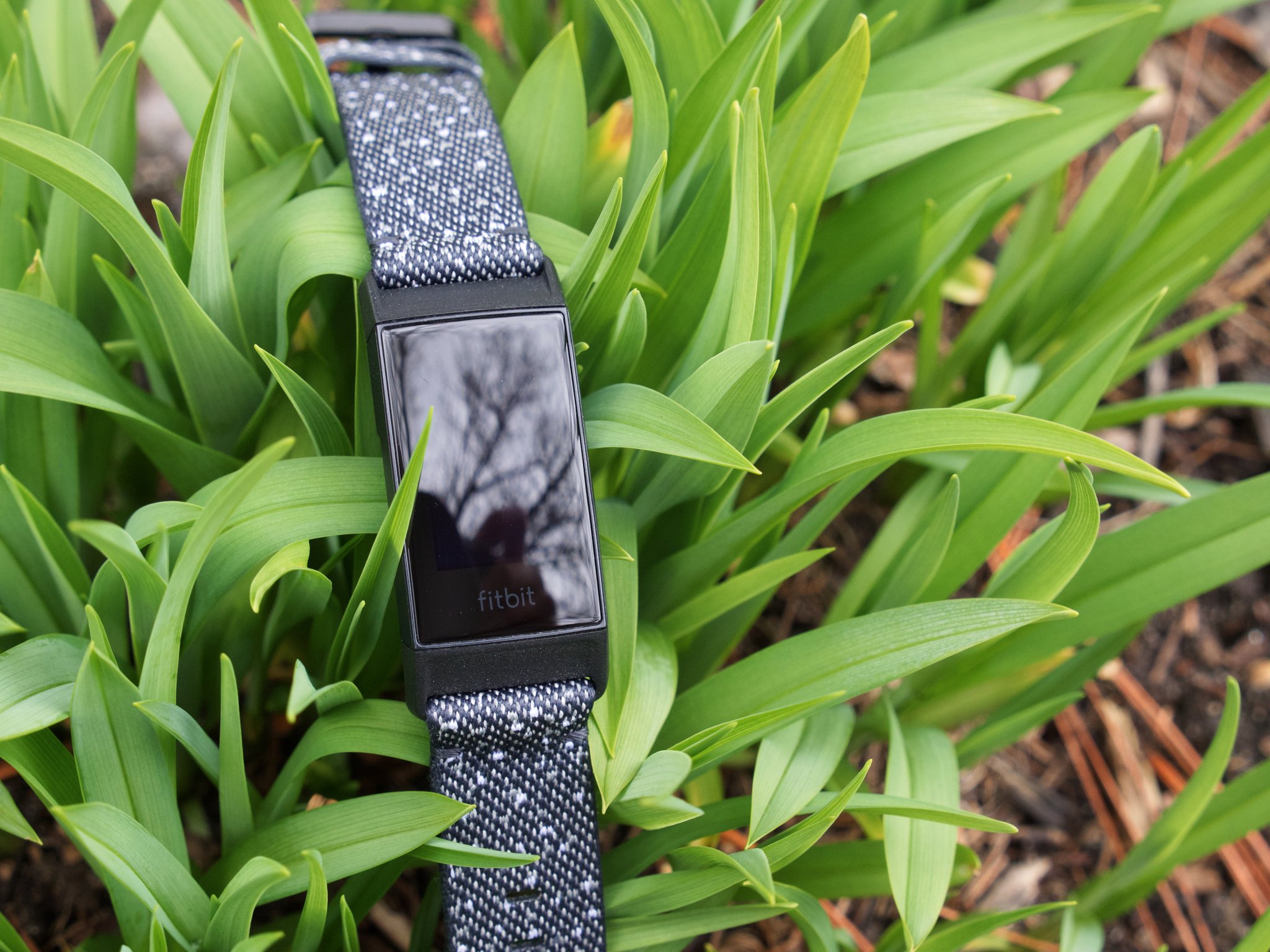Fitbit Charge 4 vs. Apple Watch Series 3: Which should you buy?


New fitness tracker
When it comes to health and fitness tracking, the Fitbit Charge 4 is an excellent value. It features a built-in GPS, Active Zone Minutes, 24/7 heart rate monitoring, Sp02, stress management, and all-day activity and sleep tracking. You can connect and control your Spotify account directly from your wrist, and you'll get up to seven days of battery life on a full charge.
Pros
- Built-in GPS
- Active Zone Minutes
- 24/7 heart rate
- Sp02 + stress management
- All-day activity + sleep tracking
- 7-day battery life
Cons
- Small display
- Minimal "smart" functionality

Older smartwatch
Apple Watch Series 3 is a smartwatch that features built-in GPS, safety tracking, Siri assistant, calls and texts phone-free, and all-day activity and sleep tracking. It seamlessly pairs with all Apple products; plus, you can store, stream, and play your favorite tunes and podcasts via Apple Music. It offers up to 18 hours of battery life.
Pros
- Large display
- Built-in GPS
- 24/7 heart rate
- All-day activity + sleep tracking
- Call and text, phone free
- Store, stream, play music + apps
Cons
- Short battery life
- Hard to update
- Minimal storage
The Fitbit Charge 4 is a brand new member of the Fitbit family, while Apple Watch Series 3 is a bit dated, considering we're currently on Apple Watch Series 6. Fitbit Charge 4 is a fitness tracker, Apple Watch Series 3 is a smartwatch. Both come from highly reputable companies and are equipped with noteworthy features. Which one is for you?
Fitbit Charge 4 vs. Apple Watch Series 3: Newer tracker or older smartwatch?
These wearables both have good things to offer. Let's break down the specs to see how these two are alike and where they differ.
| Header Cell - Column 0 | Fitbit Charge 4 | Apple Watch Series 3 |
|---|---|---|
| Display | Small | Large |
| Touchscreen | Yes | Yes |
| Built-in GPS | Yes | Yes |
| All-day activity tracking | Yes | Yes |
| Sleep tracking | Yes | Yes (third-party app) |
| Water-resistant (50M) | Yes | Yes |
| Sp02 | Yes | No |
| Stress management | Yes | Yes |
| Menstrual tracking | Yes | No |
| Preloaded sport modes | Yes (20+) | Yes |
| Safety tracking | No | Yes |
| Smart alerts | Yes | Yes |
| Media stream, play, storage | No | Yes |
| Music control | Yes | Yes |
| Companion app | Fitbit | Apple Watch |
| Customizable watch face | Yes | Yes |
| Storage | No | 8GB |
| Battery life | 7 days | 18 hours |
Fitbit Charge 4's capabilities match and surpass Apple Watch Series 3's in many ways, aside from a few smart features. Fitbit Charge 4 features newer technology and can do more for comprehensive health and fitness tracking. Apple Watch Series 3 was a great product in its time. However, its limited storage capacity might inhibit you from updating the software and downloading all of the apps and music that you want. Let's look a little deeper at what both devices offer.
Fitbit Charge 4 vs. Apple Watch Series 3: Health and fitness tracking
When it comes to tracking health and fitness, both of these wearables can get the job done — both track all-day activity and sleep. However, Fitbit Charge 4's capabilities exceed Apple Watch 3's in this arena. Fitbit Charge 4 features automatic sleep tracking and silent alarms on your wrist when it comes to sleep. Plus, you'll get bedtime reminders and tips on how you can get better rest in the Fitbit app.
Charge 4 tracks the time you spend in light, deep, and REM sleep stages to deliver helpful insight that can improve sleep over time. You can also see your Sp02 nightly averages and ranges and view trends over the past week in the app. Charge 4 will give a nightly sleep score based on your heart rate, time asleep, and restlessness, so you can better understand your sleep quality each night. Apple Watch Series 3 only offers sleep tracking through third-party apps, and it doesn't measure blood oxygen saturation (Sp02) at all.
When it comes to comprehensive health and fitness tracking, Fitbit Charge 4 can do more.
Fitbit Charge 4 offers menstrual health tracking; it uses your tracker in tandem with the Fitbit app to follow your cycle, record symptoms, and more. Unfortunately, the Series 3 does not have this feature.
When it comes to fitness tracking, both the Charge 4 and Apple Watch 3 come with preloaded workout modes, but Fitbit Charge 4 features Active Zone Minutes and workout intensity maps. Active Zone Minutes will give your wrist a buzz when you reach your target heart rate zones during exercise and celebrate when you earn extra minutes outside workouts. After outdoor exercise, you can check out your workout intensity map in the Fitbit app to see your heart rate zones along your routes. The Apple Watch Series 3, on the other hand, displays activity rings, so you can see how much you're moving, exercising, and standing throughout your day.
iMore offers spot-on advice and guidance from our team of experts, with decades of Apple device experience to lean on. Learn more with iMore!
Fitbit Charge 4 vs. Apple Watch Series 3: Smart features

You will get all call, text, alerts, and email notifications with both Fitbit Charge 4 and Apple Watch Series 3. However, Apple Watch Series 3 is a smartwatch, not a fitness tracker, so it has a lot more to offer when it comes to smart features. For instance, you can make calls and send texts using only your watch; no phone is required. You can also access and command Siri, your friendly smart assistant, to check on the weather, set alarms, get news updates, and more.
Apple Watch 3 offers safety tracking; you can call emergency services directly from your wrist if needed. It also pairs seamlessly with Apple products to automatically sync with your iPhone and even unlock your MacBook Pro if it's in range. When it comes to media, Apple Watch Series 3 can store, stream, and play music, as well as download your favorite apps right on your wrist.
Apple Watch Series 3 can store, stream, and play music, as well as download apps.
The Fitbit Charge 4 uses the Spotify app, but that's it for music. Keep in mind that the Charge 4's display is tiny, and the Spotify app doesn't offer a way to adjust your phone's volume while you're listening to tunes on the best wireless headphones. Plus, the display often cuts off song and album titles if they're too long.
An important thing to note about Apple Watch Series 3 is that it's tough to update to current software, as it's becoming obsolete. Apple Watch 3 has a minuscule 8GB of internal storage, most of which is taken up by the operating system and other critical software. Like the current watchOS 7.4, installing an update requires you to completely restore and reset your Apple Watch Series 3. Once you do this and update the current software, there is virtually no space for additional apps or music.
Fitbit Charge 4 vs. Apple Watch Series 3: *Battery life and cost

When it comes to battery life, Fitbit Charge 4 comes out ahead by a landslide. It features up to seven days of battery life, while Apple Watch Series 3 offers up to 18 hours. Take note that both of these wearables are outfitted with built-in GPS and that Apple Watch Series 3 hosts media play, stream, and storage. If you're operating either in GPS mode or music mode, you're going to drain the battery a lot faster.
Finally, it's a good idea to look at what you're paying for. If you want less of a focus on fitness and more on smartwatch features, you can get the Apple Watch Series 3; but, keep in mind that it is beginning to show its age, and it won't be able to store as much as the Apple Watch Series 6. With newer and better options, it doesn't seem worth the price.
The Fitbit Charge 4 is almost half the price with more up-to-date features and hardware as far as fitness trackers go. So, depending on what you're looking for, the Charge can save you money in the long run.
Fitbit Charge 4 vs. Apple Watch Series 3: Colors and customization
When it comes to colors and customization, both of these wearables have options. Fitbit Charge 4 comes in four colors: black, rosewood, storm blue and black, and special edition woven granite. You can make it your own even more with one of the best replacement bands.
It offers a customizable clock face. You can choose from a variety of faces designed for every occasion. Apple Watch Series 3 comes in two colors: black and white. It offers hundreds of customizable clock faces to choose from. You can personalize it further with one of the best bands for Apple Watch Series 3.
Fitbit Charge 4 vs. Apple Watch Series 3: Which should you buy?
If you're looking for a great fitness tracker, we recommend purchasing Fitbit Charge 4 over Apple Watch Series 3. It's newer; it was released in March 2020, while Apple Watch Series 3 was released in September 2017. The Charge 4 is one of the best Fitbit, as well as one of the best overall fitness trackers available on the market today. At $100 less than Apple Watch Series 3, it's an excellent value.
Fitbit Charge 4 can do more than Apple Watch Series 3 when it comes to comprehensive health and fitness tracking, and it has much longer battery life. If you're adamant about having smart features, Apple Watch Series 3 is a great product. Keep in mind that it is a bit dated. If you continue to update the software, you're going to suck up a lot of its storage space and won't have much room for personal media storage.

Nicolette is a freelance writer for iMore. She's been hooked on Apple products since she got the very first iPhone in 2007 and made the switch from PC to Mac in 2008 after inadvertently dousing her laptop with a hefty dose of water. A dedicated creative, Nicolette has had the pleasure of working with some of the top websites, studios, and brands in the industry throughout her career, and enjoys writing about all things: Apple, health, fitness, audio, and home. With over a decade of high-level experience as a health and fitness professional, Nicolette specializes in tech pertaining to the field. If she’s not working, you can find her sipping a glass of wine, enjoying a concert, or hanging with her family.
